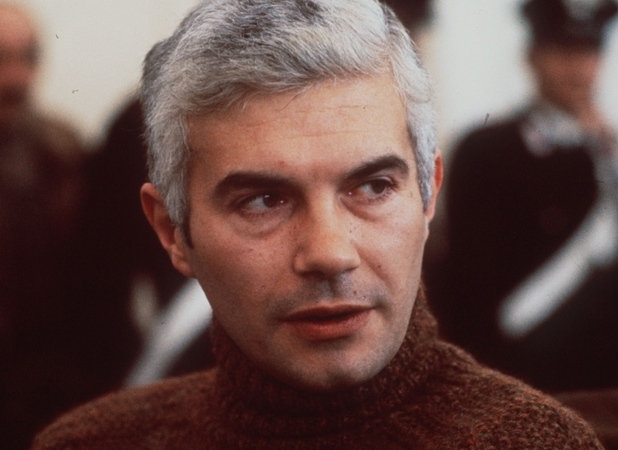Considered by certain people as “the greatest traditionalist thinker of the Occident,” Julius Evola (1898-1974) always had difficult relations with the MSI while exercising a certain influence on the most radical circles, the FAR in their time then Ordine Nuovo or Avanguardia Nazionale. Evola was held on the margins of Fascism during the Ventennio (1922-1943). Despite his criticisms, however, he still wanted solidarity with the Italian Social Republic after 1943. Influenced by both Nietzsche and Guénon, he cultivated in fashion of the first the contempt of the plebeian and the praise of the self-made superman. But he joined Guénon in his interpretation of history as a process of decadence and involution leading, according to the Hindu tradition, to the Kali Yuga, the demonic age preceding the return to primordial chaos (1). However, he was ready to recognize that certain political forms, more or less in accord with his hierarchical idea of Tradition, could slacken the decline. Such was his interpretation of fascism, in the measure where it, by its attempt to rehabilitate heroic values, constituted a challenge to modern societies and to the faceless mass man.
In the eyes of the militants or intellectual of the young post-fascist generation, Evola presented the advantage of proceeding from a vigorous internal critique of fascism without ceding to anti-fascism. He offered a coherent and sophisticated “vision of the world,” pitiless for modernity, to which he opposed a construction far more radical and absolute than that of fascism (2). Condemning for example nationalism for its “naturalist” inspiration, Evola opposed to it “the race of the spirit” and “the idea, our true fatherland.” What counted, he said, “it is not sharing the same earth or speaking the same language, it’s sharing the same idea (3).” What idea? That of a superior order, which ancient Rome, Medieval Chivalry, or Prussia had expressed. He proposed a style of life made with severity, discipline, durability, sacrifice, practiced as asceticism. Evola was not a pure spirit. He had served in the artillery in the course of the First World War, and had been, in his youth, a distinguished alpinist, author of the admirable Meditations on the Peaks. At his death, his ashes were deposited on the summit of Monte Rosa.
Towards 1950, then believing in the chances of the MSI, Evola wanted to give a warrior’s “bible” to the young militants of this movement: that was Men Among the Ruins (*), prefaced with an essay by Prince Borghese (4). His hopes were dashed, he withdrew from the MSI and all political action beginning in 1957. He would publish Ride the Tiger a bit later (1961), (**) a difficult work that contradicted the preceding one (5). He declared in substance that in a world going to its ruin, nothing was worth saving, the sole categorical imperative being to follow the interior way with a perfect detachment from all that surrounds us, but by assuming that what life offers is painful and tragic. This message raised lively controversies in the sect of those ironically called “the Witnesses of Evola.” Some understood it as an invitation to retire from the world, and others as a invitation to dynamite decadent society. It is this part of the message which would be understood by the Italian adepts of brutal activism that would manifest in the course of the “years of lead.”
What Ride the Tiger expressed reflected the disgust that swamp of petty parliamentary politics in which the MSI sank could inspire in even the most idealistic. But, beyond that, was the evolution of Western and Italian society submitting to the hold of consumerism and materialism.
In the course of the following decades, the generalization of violence and terrorism on the left had some important effects within the radical right that influenced the philosopher. The two principal extra-parliamentary organizations, Ordine Nuovo and Avanguardia Nazionale, having been dissolved in 1973, grew to illegality. But this strategy was broken by outright repression.
However, a new generation was at work who had made a superficial reading of Evola. Born after 1950, foreign to the historical memory of fascism, it willingly criticized the “old guard” of the MSI, and the equally sacred monsters of the activist right, of the Borghese type, and their obsolete strategy of the coup d’Etat. They proclaimed emphatically the end of ideology and the primacy of action. For this generation of very young militants, before the void of old dead values, combat remained as an existential value. “It is not to power that we aspire, nor to the creation of a new order,” one read in 1980 in Qex, newsletter of political prisoners of the right. “It’s the struggle that interests us, it’s action itself, the affirmation of our own nature.” The influence of Ride the Tiger was evident. But that, which according to Evola, should have resulted in an internal asceticism, was here reduced to its most brutal literal meaning, by identification with the simplistic myth of the “warrior.” This derivation lead to the summary theorization of “armed spontaneity,” as much as retreat into an esoteric ivory tower.
